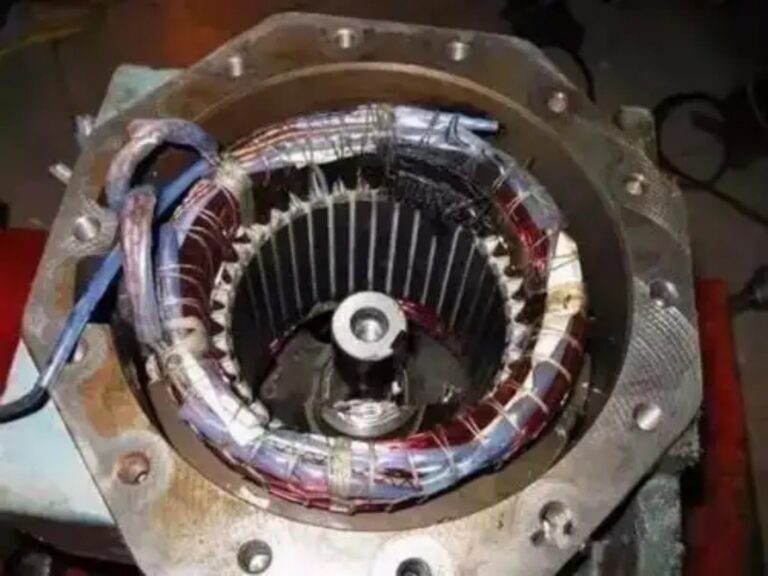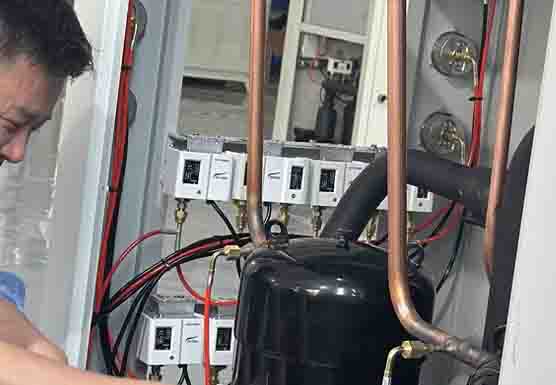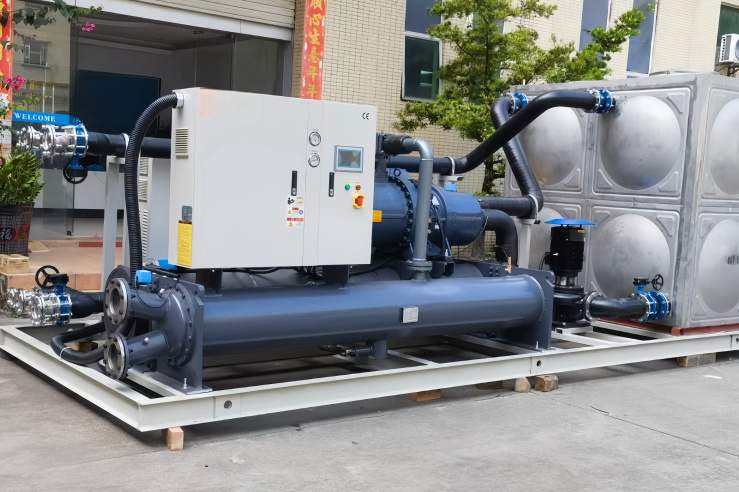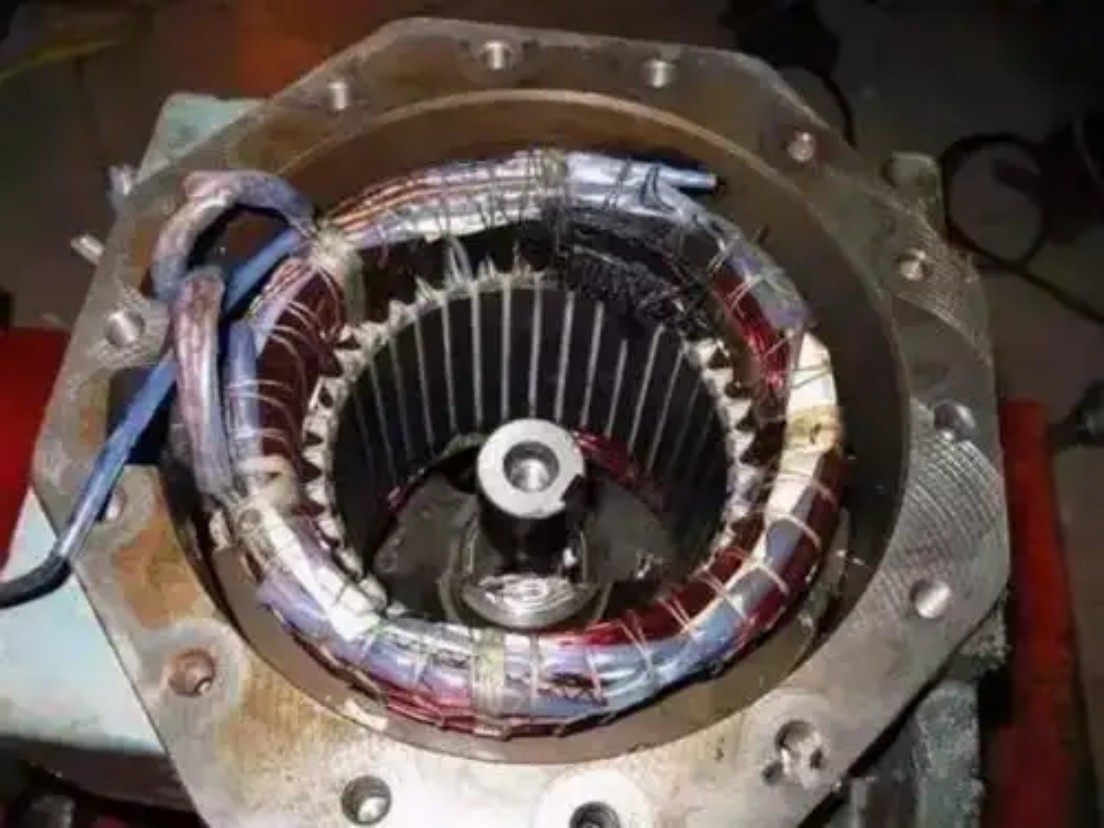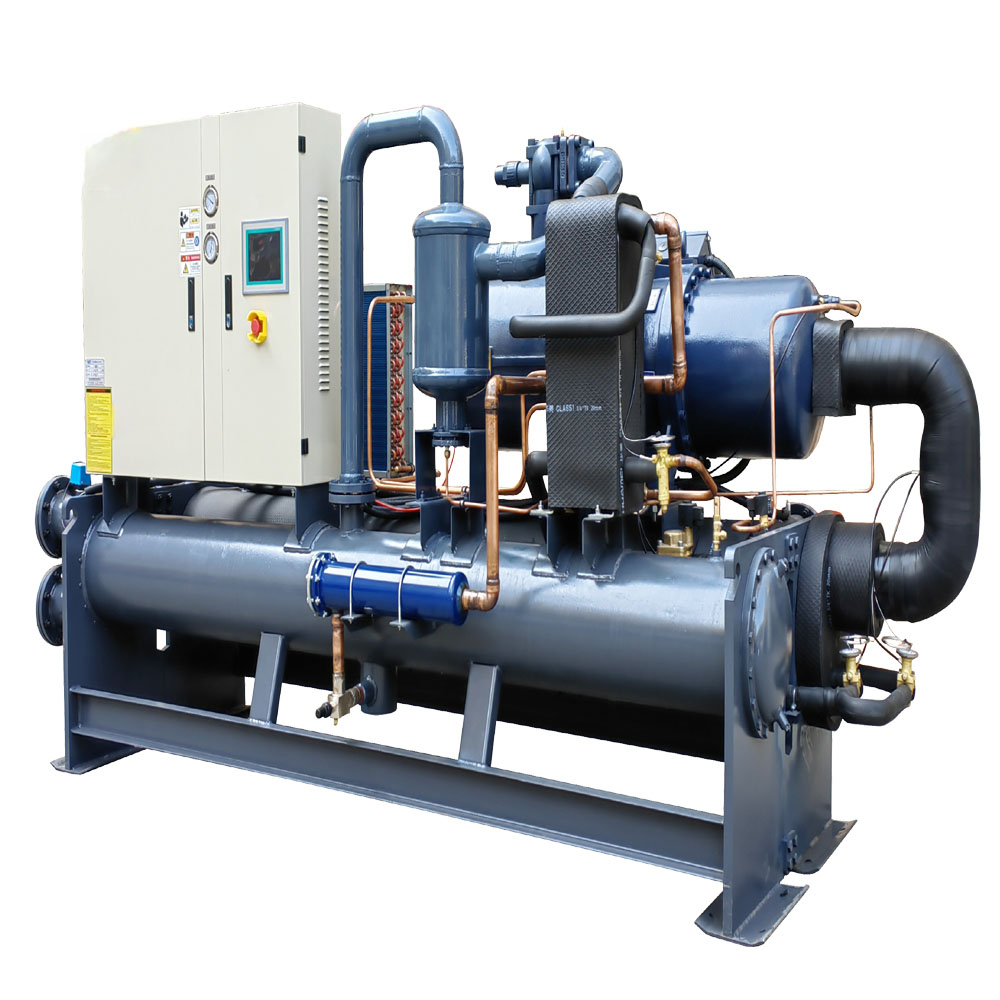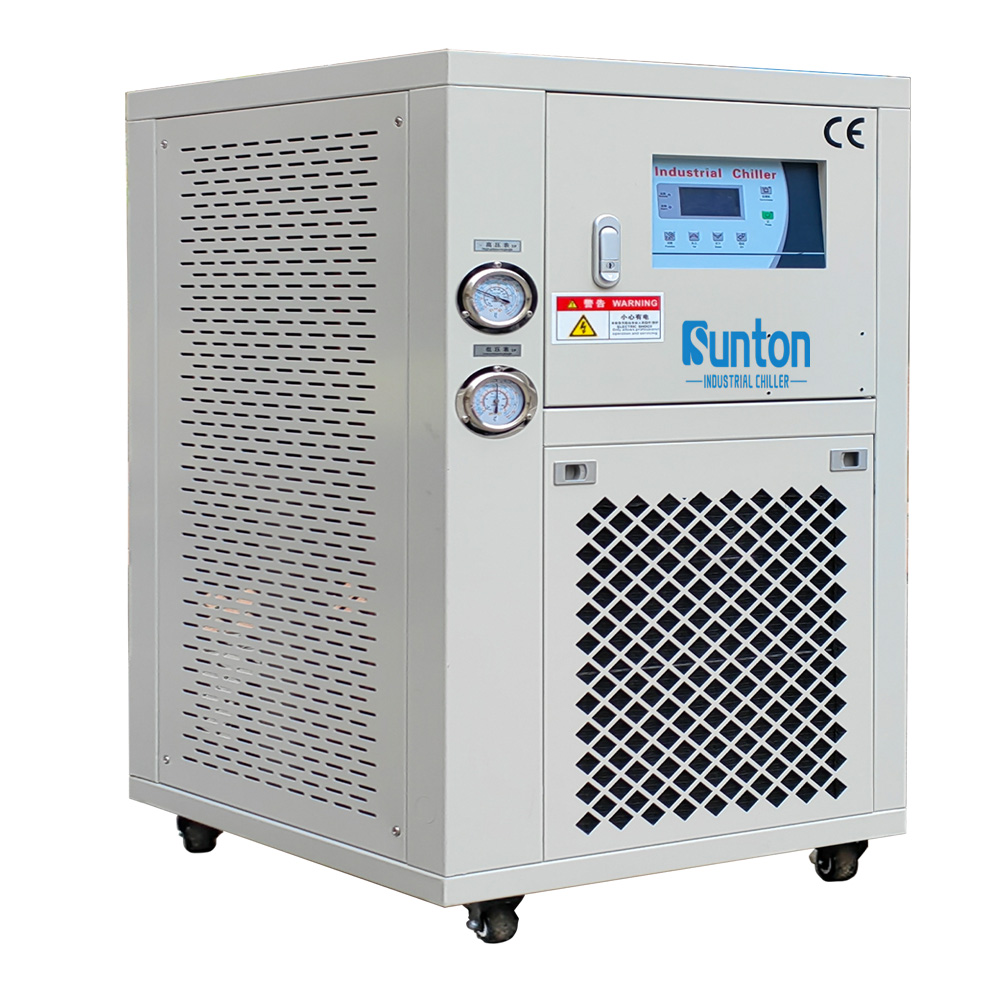-
달링산 산업 광동
유제품 냉각기
시원하게 유지: 농장을 위한 유제품 냉각기에 대한 완벽한 가이드
이 포괄적인 가이드는 세계를 깊이 파헤칩니다. A 대용량 탱크는 품질을 떨어뜨리지 않고 대량의 우유를 보관하는 데 필수적입니다. 최적의 보관을 위해 우유를 시원한 온도로 유지하도록 설계되었습니다. 냉각기, 귀사의 품질과 수익성을 유지하는 데 있어서 그들이 하는 필수적인 역할을 탐구합니다. 낙농 운영. 당신이 소규모 가족이든 농장 또는 대규모 낙농 생산 시설, 이해 방법 우유 냉각기 작업, 사용 가능한 다양한 유형, 하나를 선택할 때 고려해야 할 핵심 요소가 중요합니다. 이 기사는 모든 사람이 꼭 읽어야 할 글입니다. 낙농업자 최적화를 위해 노력하고 있습니다 우유의 품질을 유지하려면 보관 및 운송 중에 시원한 환경이 필수적입니다. 프로세스, 제품 품질 향상, 최종 이익 증가. 기본 냉각 원리부터 고급 기능 및 유지 관리 팁까지 모든 것을 다루어 정보에 입각한 결정을 내리는 데 필요한 모든 정보를 제공합니다.
우유 냉각기란 무엇이고, 왜 필요한가요?
A 우유 냉각기 이다 냉장 시스템 특별히 빠르게 설계됨 cool 신선한 우유 젖을 짜낸 후 박테리아 증식을 방지하고 품질을 보존합니다. 냉각기 모든 것에 필수적입니다 낙농 대규모 또는 소규모 작업이든, 이것이 보장되기 때문입니다. 우유 신선도와 영양가를 유지합니다. 냉각기, 귀하의 소중한 우유 급속히 부패할 위험이 있습니다.
우유, 신선할 때 암소, 따뜻하고 박테리아가 번식하기 쉽습니다. 빨리 식히지 않으면 이러한 박테리아가 빠르게 번식하여 부패와 상당한 제품 손실을 초래할 수 있습니다. A 냉각기 빠르게 낮아진다 우유 온도 안전한 수준으로 유지하여 박테리아 증식을 억제하고 유통기한 의 우유이는 이익 마진을 극대화하고 소비자에게 고품질의 제품을 제공하는 데 필수적입니다.
우유 냉각기는 어떻게 작동하나요?
우유 냉각기 를 사용하여 냉장 집에 있는 냉장고와 비슷한 사이클을 사용하여 열을 제거하다 에서 우유. . 체계 일반적으로 다음을 포함합니다. 압축기, 응축기, 그리고 냉각기의 증발기는 우유 보관에 이상적인 온도를 유지하기 위해 효율적인 냉각을 제공합니다., 함께 일하여 순환합니다 냉매 열을 흡수하고 발산합니다.
따뜻한 우유 일반적으로 우유는 착유장에서 냉장 저장 탱크로 펌핑되어 빠르게 식혀집니다. 벌크 탱크. 내부 탱크, 냉각 재킷 추위를 포함하다 냉매 열을 흡수하다 우유, 원하는 온도까지 빠르게 냉각합니다. 그런 다음 냉매는 압축기로 돌아가 사이클을 반복합니다. 이 효율적인 프로세스는 우유가 빠르고 효율적으로 냉각되어 품질과 신선도를 유지합니다.
다양한 유형의 우유 냉각기: 어떤 것이 나에게 맞을까?
두 가지 주요 유형이 있습니다 우유 냉각기: 대량 우유 탱크 냉각기(침지 냉각기 또는 아이스뱅크 냉각기라고도 함) 및 플레이트 냉각기 냉각기. 올바른 유형을 선택하는 것은 운영 규모, 예산 및 특정 냉각 요구 사항에 따라 달라집니다.
- 대량 우유 탱크 냉각기: 이것은 특히 작은 규모의 경우 가장 일반적인 유형입니다. 낙농장. 그들은 직접적으로 통합됩니다 벌크 탱크 직접 팽창이나 얼음물을 사용합니다. cool 의 우유.
- 플레이트 칠러: 이 시스템은 일련의 판을 사용하여 빠르게 cool 의 우유 그것들을 통해 흐를 때. 더 큰 작업에 더 효율적이며, 더 빠른 냉각과 더 큰 용량을 제공합니다.
일상을 고려하세요 우유 적절한 냉각기 크기를 결정하기 위해 생산량(일일 갤런)을 알아야 합니다. 예를 들어, 작은 농장 수백개를 생산하다 갤런 하루에 대량 탱크 냉각기를 선택할 수 있는 반면, 수천 갤런을 생산하는 대규모 운영은 플레이트 냉각기의 효율성에서 이점을 얻을 수 있습니다. 냉장 전문가와 상담하면 고유한 상황에 가장 적합한 선택을 결정하는 데 도움이 될 수 있습니다.
유제품 냉각기에 적합한 용량 선택
올바른 선택 용량 당신을 위해 우유 냉각기 효율적이고 효과적인 냉각을 위해서는 필수적입니다. 용량 일반적으로 마력(HP)으로 측정되며 냉각 성능을 나타냅니다. 단위.
- 무리의 크기와 일일 우유 생산량을 고려하세요. 더 많은 우유를 생산하는 더 큰 무리에는 증가된 양을 처리할 수 있는 효율적인 저장 솔루션이 필요합니다. 우유 더 높은 것이 필요할 것입니다 용량 냉각기.
- 미래의 확장에 대해 생각해 보세요: 잠재적인 성장을 수용할 수 있는 냉각기를 선택하십시오. 낙농 작업.
- 주변 온도 요인: 더운 기후에서는 더 높은 것이 필요할 수 있습니다. 용량 냉각기 최적의 상태를 유지하려면 우유 온도.
적절한 크기 냉각기 ~을 보장합니다 우유 빠르고 효율적으로 냉각되어 품질을 유지하고 부패를 방지합니다. 크기가 작으면 냉각 속도가 느려지고 박테리아가 자랄 가능성이 있고, 크기가 너무 크면 불필요한 에너지 소비가 발생할 수 있습니다. 냉장 전문가가 정확한 계산을 도와드릴 수 있습니다. 용량 귀하의 특정 요구 사항에 필요합니다.
고품질 유제품 냉각기에서 찾아야 할 주요 기능
선택할 때 유제품 냉각기최적의 성능, 안정성 및 수명을 보장하려면 고려해야 할 몇 가지 주요 특징이 있습니다.
- 고효율 압축기: 선택하다 냉각기 고효율로 압축기 에너지 소비를 최소화하고 운영 비용을 절감합니다.
- 내구성 있는 구조: 선택하세요 냉각기 고품질의 내식성 재료로 만들어졌습니다. 스테인리스 스틸오래 지속되는 내구성을 위해.
- 사용하기 쉬운 컨트롤: 사용자 친화적인 것을 찾으세요 제어 온도 설정을 쉽게 모니터링하고 조절할 수 있는 시스템입니다.
- 신뢰할 수 있는 온도 조절: 정확하고 신뢰할 수 있음 온도 제어 유지하는 데 중요합니다 우유 품질.
- 효과적인 청소 시스템: 청소하기 쉬운 시스템은 위생을 유지하고 박테리아 오염을 방지하는 데 도움이 됩니다.
효율적인 우유 관리를 위해서는 고품질 저장 탱크에 투자하는 것이 필수적입니다. 냉각기 이러한 기능을 사용하면 효율적이고 안정적인 성능이 보장되어 보호됩니다. 우유 품질을 높이고 투자를 극대화합니다. 다양한 냉각기 모델을 비교할 때 이러한 기능을 신중하게 고려하는 것이 필수적입니다.
우유 냉각 시스템의 설치 및 유지 관리
적절한 설치 수명과 효율성을 극대화하려면 정기적인 유지 관리가 필수적입니다. 우유 냉각 시스템.
- 전문적인 설치: 당신이 가지고있는 것이 중요합니다 냉각기 전문가가 설치하여 적절한 작동을 보장하고 비용이 많이 드는 수리를 방지합니다.
- 정기 유지 관리: 정기적인 유지관리 점검 일정을 세워 잠재적인 문제를 일찍 파악하고 해결하고, 심각한 고장을 예방하세요.
- 청소 및 살균: 정기적으로 청소 및 살균하십시오 탱크, 펌프및 기타 구성 요소를 포함하여 위생을 유지하고 박테리아 성장을 방지합니다.
- 냉매 점검: 감시 장치 냉매 최적의 냉각 성능을 보장하기 위해 수준을 확인하고 누출을 즉시 해결합니다.
적절한 설치 정기적인 유지관리를 통해 장기적인 효율성과 안정성을 보장할 수 있습니다. 우유 냉각기귀하의 투자와 품질을 보호합니다. 우유.
낙농장을 위한 냉각기 솔루션 사용자 정의
우리는 모든 것을 이해합니다 낙농장 고유하기 때문에 맞춤형 서비스를 제공합니다. 냉각기 솔루션 귀하의 특정 요구 사항을 충족합니다. 특정 요구 사항이 필요한지 여부 탱크 크기, 특정 냉매, 또는 특수 기능을 사용할 수 있습니다 사용자 정의 에이 냉각기 귀하의 작업에 완벽히 맞습니다.
- 탱크 크기 및 구성: 다양한 상품을 제공합니다 탱크 크기 및 구성 포함 수직의 귀하의 공간과 생산 요구에 맞게 수평 및 수평 옵션을 제공합니다.
- 냉매 옵션: 다양한 친환경 제품 중에서 선택하세요 냉매 지속 가능성 목표를 달성하려면
- 제어 시스템 통합: 통합하세요 냉각기 기존 제어 시스템을 사용하여 원활한 모니터링과 관리를 할 수 있습니다.
경험이 풍부한 엔지니어 팀이 귀하와 긴밀히 협력하여 설계 및 구축합니다. 맞춤형 냉각기 솔루션 당신을 최적화합니다 우유 냉각 처리하고 수익을 극대화합니다. 냉각기, 낙농 특정 및 기타 모든 제품은 견고한 구성 요소로 제작되었으며 포괄적인 보증이 제공됩니다. 또한 다음을 위한 장치를 사용자 정의할 수도 있습니다. 프로세스 냉각 우유 냉각 이외의 응용 프로그램. 사용 중이더라도 글리콜 탱크 다른 제품에 대해서는 고객의 요구에 맞춰 냉각기 기반 솔루션을 제작할 수 있습니다.
유제품 냉각기 요구 사항을 위해 당사와 협력하는 이점
귀하를 위한 우리와의 파트너십 유제품 냉각기 needs는 단순히 장비를 구매하는 것 이상의 다양한 혜택을 제공합니다. 우리는 선도적인 중앙 냉각기 견고한 제품을 제공하는 제조업체 냉각탑 솔루션.
- 전문가 조언 및 상담: 우리는 당신이 올바른 것을 선택할 수 있도록 전문가의 조언과 지침을 제공합니다 냉각기 귀하의 특정 요구 사항에 맞게. 당사 팀은 복잡성을 이해합니다. 유제품 산업 귀하의 운영에 가장 적합한 솔루션을 추천해 드립니다.
- 맞춤형 디자인 및 제조: 우리는 제공합니다 맞춤형 디자인 그리고 제조 역량을 바탕으로 냉각기가 고객의 요구 사항에 완벽하게 부합하도록 보장합니다.
- 고품질 제품: 우리는 최고 품질의 구성 요소와 재료만을 사용하여 제품을 제작합니다. 냉각기오래 지속되는 성능과 안정성을 보장합니다.
- 포괄적인 보증 및 지원: 당사의 냉각기에는 포괄적인 보증과 지속적인 지원이 제공되어 가동 중단 시간을 최소화하고 투자를 극대화할 수 있습니다.
우리를 당신의 선택으로 칠러 파트너 신뢰할 수 있는 고문과 모든 것에 대한 신뢰할 수 있는 소스를 얻는 것을 의미합니다. 우유 냉각 우리는 당신이 경쟁에서 성공할 수 있도록 돕기 위해 최선을 다하고 있습니다. 낙농 유제품 농부들이 보다 경제적인 솔루션을 모색함에 따라 공랭식 냉각기 시장이 확대되고 있습니다. 또한, 당사는 다음과 같은 다양한 산업용 냉각기를 제공합니다. 수냉식 스크롤 냉각기, 공냉식 스크류 냉각기 그리고 수냉식 스크류 칠러 다양한 산업용으로 사용 가능.
새로운 우유 냉각기로 ROI 계산
새로운 에너지 효율적인 투자 우유 냉각기 당신의 것을 상당히 개선할 수 있습니다 낙농 에너지 비용을 줄이고, 우유 부패를 최소화하고, 제품 품질을 극대화하여 농장의 최종 이익을 개선합니다.
- 에너지 소비 감소: 고효율성 냉각기 이전 모델에 비해 에너지 비용을 상당히 줄일 수 있습니다.
- 최소화된 모유 손실: 급속 냉각으로 박테리아 증식과 부패를 방지하여 제품 손실로 인한 비용을 절감할 수 있습니다.
- 향상된 제품 품질: 적절한 냉각은 품질을 보존합니다. 우유이를 통해 시장에서 더 높은 가격을 요구할 수 있습니다.
에너지 소비량과 우유 손실량에서 잠재적인 절감 효과를 계산하면 새로운 냉각기의 투자 수익률(ROI)을 파악하고 농장 수익성에 도움이 되는 정보에 입각한 결정을 내릴 수 있습니다.
유제품 냉각 기술의 미래 동향
그리고 유제품 냉각 산업은 끊임없이 발전하고 있으며, 효율성, 지속 가능성, 성과를 개선하기 위해 새로운 기술과 혁신이 등장하고 있습니다.
- 스마트 칠러: 고급 제어 시스템과 데이터 분석 기능을 갖춘 지능형 냉각기가 점점 더 인기를 얻고 있습니다.
- 가변 속도 드라이브: 가변 속도 압축기 더 큰 에너지 효율성과 정확성을 허용합니다. 온도 제어, 변화하는 수요에 맞춰 냉각 용량을 조정합니다.
- 친환경 냉매: 산업계는 지구 온난화 잠재력(GWP)이 낮은 환경 친화적 냉매를 향해 나아가고 있습니다.
- 향상된 연결성: 센서와 데이터 로깅 기능이 통합된 냉각기는 시스템 성능에 대한 귀중한 통찰력을 제공하고 예측적 유지 관리를 용이하게 합니다.
이러한 동향에 대한 최신 정보를 얻으면 향후 냉장 시설 투자에 대한 정보에 입각한 결정을 내리고 운영의 경쟁력과 지속 가능성을 확보하는 데 도움이 됩니다.
Dairy Chillers에 대한 FAQ
우유 탱크는 얼마나 자주 청소해야 하나요?
위생을 유지하고 박테리아 증식을 방지하기 위해 우유를 짜낸 후에는 반드시 우유 탱크를 청소하고 살균해야 합니다.
우유를 보관하기에 이상적인 온도는 얼마인가요?
우유를 보관하기에 이상적인 온도는 39°F(4°C)에서 41°F(5°C) 사이입니다. 이 온도 범위는 박테리아 성장을 억제하고 우유 품질을 보존합니다.
우유 냉각기에는 어떤 유형의 냉매가 사용됩니까?
현대의 우유 냉각기는 일반적으로 R134a 또는 R404A와 같은 환경 친화적인 냉매를 사용하는데, 이는 경제적이고 오존층에 미치는 영향이 적습니다. 올바른 유형을 선택하는 것은 특정 응용 분야와 환경 규정에 따라 달라집니다.
우유를 원하는 온도까지 식히려면 얼마나 걸리나요?
냉각 시간은 냉각기 용량, 초기 우유 온도, 주변 온도를 포함한 여러 요인에 따라 달라집니다. 최신 냉각기는 일반적으로 몇 시간 내에 우유를 원하는 온도로 냉각할 수 있습니다.
우유 냉각기의 수명은 얼마입니까?
적절한 설치와 정기적인 유지관리를 통해 우유 냉각기는 15~20년 또는 그 이상 지속될 수 있습니다. 세척, 검사, 냉매 점검을 포함한 정기적인 유지관리는 냉각기의 수명을 극대화하는 데 필수적입니다.
냉각기가 고장나면 어떻게 해야 하나요?
냉각기가 오작동하는 경우 자격을 갖춘 냉장 기술자에게 즉시 연락하여 문제를 진단하고 수리하십시오. 냉각기를 직접 수리하려고 하면 위험할 수 있으며 보증이 무효화될 수 있습니다. 당사의 방폭 냉각기 민감한 환경에서 유익할 수 있습니다.
주요 요점: 유제품 냉각기에 대해 기억해야 할 필수 사항
- 빠른 우유 냉각 세균 증식을 방지하고 보존하는 데 필수적입니다. 우유 품질.
- 선택하세요 냉각기 유형 및 용량 귀하의 특정 사항을 충족합니다 낙농장 필요.
- 고효율성과 같은 주요 기능을 찾아보세요 압축기, 내구성 있는 구조, 그리고 신뢰성 온도 제어.
- 적절한 설치와 정기적인 유지관리는 수명과 효율성을 극대화하는 데 필수적입니다. 냉각기.
- 평판이 좋은 회사와 협력 냉각기 지식이 풍부한 공급업체는 운영 효율성을 위한 전문적인 조언, 맞춤 솔루션, 신뢰할 수 있는 지원을 제공합니다.
이러한 핵심 측면을 이해함으로써 우유 냉각귀하에게 유익한 정보에 입각한 결정을 내릴 수 있습니다. 낙농 운영의 수익성과 지속 가능성을 위해 우리는 여기 있습니다. 파트너 우리는 귀하의 성공을 보장하기 위해 모든 단계에서 귀하와 함께 하며, 전문성과 지원을 제공합니다.

